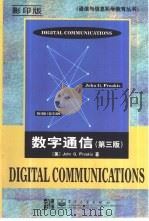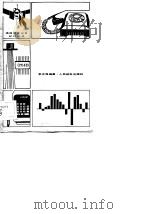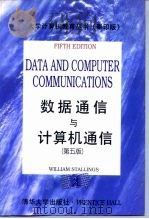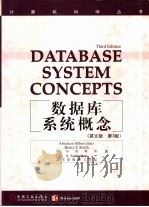《数字通信 英文版 第3版》
| 作者 | (美)(J.普罗阿基斯)John G.Proakis著 编者 |
|---|---|
| 出版 | 北京:电子工业出版社 |
| 参考页数 | 928 |
| 出版时间 | 1998(求助前请核对) 目录预览 |
| ISBN号 | 750534885X — 求助条款 |
| PDF编号 | 88764618(仅供预览,未存储实际文件) |
| 求助格式 | 扫描PDF(若分多册发行,每次仅能受理1册) |

1 Introduction1
1-1 Elements of a Digital Communication System1
1-2 Communication Channels and Their Characteristics3
1-3 Mathematical Models for Communication Channels11
1-4 A Historical Perspective in the Development of Digital Communications13
1-5 Overview of the Book16
1-6 Bibliographical Notes and References16
2 Probability and Stochastic Processes17
2-1 Probability17
2-1-1 Random Variables, Probability Distributions, and Probability Densities22
2-1-2 Functions of Random Variables28
2-1-3 Statistical Averages of Random Variables33
2-1-4 Some Useful Probability Distributions37
2-1-5 Upper bounds on the Tail Probability53
2-1-6 Sums of Random Variables and the Central Limit Theorem58
2-2 Stochastic Processes62
2-2-1 Statistical Averages64
2-2-2 Power Density Spectrum67
2-2-3 Response of a Linear Time-Invariant System to a Random Input Signal68
2-2-4 Sampling Theorem for Band-Limited Stochastic Processes72
2-2-5 Discrete-Time Stochastic Signals and Systems74
2-2-6 Cyclostationary Processes75
2-3 Bibliographical Notes and References77
Problems77
3 Source Coding82
3-1 Mathematical Models for Information82
3-2 A Logarithmic Measure of Information84
3-2-1 Average Mutual Information and Entropy87
3-2-2 Information Measures for Continuous Random Variables91
3-3 Coding for Discrete Sources93
3-3-1 Coding for Discrete Memoryless Sources94
3-3-2 Discrete Stationary Sources103
3-3-3 The Lemple-Ziv Algorithm106
3-4-1 Rate-Distortion Function108
3-4 Coding for Analog Sources-Optimum Quantization108
3-4-2 Scalar Quantization113
3-4-3 Vector Quantization118
3-5 Coding Techniques for Analog Sources125
3-5-1 Temporal Waveform Coding125
3-5-2 Spectral Waveform Coding136
3-5-3 Model-Based Source Coding138
Problems144
3-6 Bibliographical Notes and References144
4 Characterization of Communication Signals and Systems152
4-1 Representation of Bandpass Signals and Systems152
4-1-1 Representation of Bandpass Signals153
4-1-2 Representation of Linear Bandpass Systems157
4-1-3 Response of a Bandpass System to a Bandpass Signal157
4-1-4 Representation of Bandpass Stationary Stochastic Processes159
4-2-1 Vector Space Concepts163
4-2 Signal Space Representation163
4-2-2 Signal Space Concepts165
4-2-3 Orthogonal Expansions of Signals165
4-3 Representation of Digitally Modulated Signals173
4-3-1 Memoryless Modulation Methods174
4-3-2 Linear Modulation with Memory186
4-3-3 Nonlinear Modulation Methods with Memory190
4-4 Spectral Characteristics of Digitally Modulated Signals203
4-4-1 Power Spectra of Linearly Modulated Signals204
4-4-2 Power Spectra of CPFSK and CPM Signals209
4-4-3 Power Spectra of Modulated Signals with Memory220
4-5 Bibliographical Notes and References223
Problems224
5 Optimum Receivers for the Additive White Gaussian Noise Channel233
5-1 Optimum Receiver for Signals Corrupted by AWGN233
5-1-1 Correlation Demodulator234
5-1-2 Matched-Filter Demodulator238
5-1-3 The Optimum Detector244
5-1-4 The Maximum-Likelihood Sequence Detector249
5-1-5 A Symbol-by-Symbol MAP Detector for Signals with Memory254
5-2 Performance of the Optimum Receiver for Memoryless Modulation257
5-2-1 Probability of Error for Binary Modulation257
5-2-2 Probability of Error for M-ary Orthogonal Signals260
5-2-3 Probability of Error for M-ary Biorthogonal Signals264
5-2-4 Probability of Error for Simplex Signals266
5-2-5 Probability of Error for M-ary Binary-Coded Signals266
5-2-6 Probability of Error for M-ary PAM267
5-2-7 Probability of Error for M-ary PSK269
5-2-8 Differential PSK(DPSK)and its performance274
5-2-9 Probability of Error for QAM278
5-2-10 Comparison of Digital Modulation Methods282
5-3 Optimum Receiver for CPM Signals284
5-3-1 Optimum Demodulation and Detection of CPM285
5-3-2 Performance of CPM Signals290
5-3-3 Symbol-by Symbol Detection of CPM Signals296
5-4 Optimum Receiver for Signals with Random Phase in AWGN Channel301
5-4-1 Optimum Receiver for Binary Signals302
5-4-2 Optimum Receiver for M-ary Orthogonal Signals308
5-4-3 Probability of Error for Envelope Detection of M-ary Orthogonal Signals308
5-4-4 Probability of Error for Envelope Detection of Correlated Binary Signals312
5-5 Regenerative Repeaters and Link Budget Analysis313
5-5-1 Regenerative Repeaters314
5-5-2 Communication Link Budget Analysis316
5-6 Bibliographical Notes and References319
Problems320
6 Carrier and Symbol Synchronization333
6-1 Signal Parameter Estimation333
6-1-1 The Likelihood Function335
6-1-2 Carrier Recovery and Symbol Synchronization in Signal Demodulation336
6-2 Carrier Phase Estimation337
6-2-1 Maximum-Likelihood Carrier Phase Estimation339
6-2-2 The Phase-locked Loop341
6-2-3 Effect of Additive Noise on the Phase Estimate343
6-2-4 Decision-Directed Loops347
6-2-5 Non-Decision-Directed Loops350
6-3 Symbol Timing Estimation358
6-3-1 Maximum-Likelihod Timing Estimation359
6-3-1 Non-Decision-Directed Timing Estimation361
6-4 Joint Estimation of Carrier Phase and Symbol Timing365
6-5 Performance Characteristics of ML Estimators367
6-6 Bibliographical Notes and References370
Problems371
7 Channel Capacity and Coding374
7-1 Channel Models and Channel Capacity375
7-1-1 Channel Models375
7-1-2 Channel Capacity380
7-1-3 Achieving Channel Capacity with Orthogonal Signals387
7-1-4 Channel Reliability Functions389
7-2 Random Selection of Codes390
7-2-1 Random Coding Based on M-ary Binary-Coded Signals390
7-2-2 Random Coding Based on M-ary Multiamplitude Signals397
7-2-3 Comparison of ? with the Capacity of the A WGN Channle399
7-3 Communication System Design Based on the Cutoff Rate400
7-4 Bibliographical Notes and References406
Problems406
8 Block and Convolutional Channel Codes413
8-1 Linear Block Codes413
8-1-1 The Generator Matrix and the Parity Check Matrix417
8-1-2 Some Specific Linear Block Codes421
8-1-3 Cyclic Codes423
8-1-4 Optimum Soft-Decision Decoding of Linear Block Codes436
8-1-5 Hard-Decision Decoding445
8-1-6 Comparison of Performance between Hard-Decision and Soft-Decision Decoding456
8-1-7 Bounds on Minimum Distance of Linear Block Codes461
8-1-8 Nonbinary Block Codes and Concatenated Block Codes464
8-1-9 Interleaving of Coded Data for Channels with Burst Errors468
8-2 Convolutional Codes470
8-2-1 The Transfer Function of a Convolutional Code477
8-2-2 Optimum Decoding of Convolutional Codes—The Viterbi Algorithm483
8-2-3 Probability of Error for Soft-Decision Decoding486
8-2-4 Probability of Error for Hard-Decision Decoding489
8-2-5 Distance Properties of Binary Convolutional Codes492
8-2-6 Nonbinary Dual-k Codes and Concatenated Codes492
8-2-7 Other Decoding Algorithms for Convolutional Codes500
8-2-8 Practical Considerations in the Application of Convolutional Codes506
8-3 Coded Modulation for Bandwidth-Constrained Channels511
8-4 Bibliographical Notes and References526
Problems528
9-1 Characterization of Band-Limited Channels534
9 Signal Design for Band-Limited Channels534
9-2 Signal Design for Band-Limited Channels540
9-2-1 Design of Band-Limited Signals for No Intersymbol Interference-The Nyquist Criterion542
9-2-2 Design of Band-Limited Sygnals with Controlled ISI-Partial-Response Signals548
9-2-3 Data Detection for Controlled ISI551
9-2-4 Signal Design for Channels with Distortion557
9-3 Probability of Error in Detection of PAM561
9-3-1 Probability of Error for Detection of PAM with Zero ISI561
9-3-2 Probability of Error for Detection of Partial-Response Signals562
9-3-3 Probability of Error for Optimum Signals in Channel with Distortion565
9-4 Modulation Codes for Spectrum Shaping566
9-5 Bibliographical Notes and References576
Problems576
10 Communication through Band-Limited Linear Filter Channels583
10-1 Optimum Receiver for Channels with ISI and AWGN584
10-1-1 Optimum Maximum-Likelihood Receiver584
10-1-2 A Discrete-Time Model for a Channel with ISI586
10-1-3 The Viterbi Algorithm for the Discrete-Time White Noise Filter Model589
10-1-4 Performance of MLSE for Channels with ISI593
10-2 Linear Equalization601
10-2-1 Peak Distortion Criterion602
10-2-2 Mean Square Error (MSE) Criterion607
10-2-3 Performance Characteristics of the MSE Equalizer612
10-2-4 Fractionally Spaced Equalizer617
10-3 Decision-Feedback Equalization621
10-3-1 Coefficient Optimization621
10-3-2 Performance Characteristics of DFE622
10-3-3 Predictive Decision-Feedback Equalizer626
10-4 Bibliographical Notes and References628
Problems628
11 Adaptive Equalization636
11-1 Adaptive Linear Equalizer636
11-1-1 The Zero-Forcing Algorithm637
11-1-2 The LMS algorithm639
11-1-3 Convergence Properties of the LMS Algorithm642
11-1-4 Excess MSE Due to Noisy Gradient Estimates644
11-1-5 Baseband and Passband Linear Equalizers648
11-2 Adaptive Decision-Feedback Equalizer649
11-2-1 Adaptive Equalization of Trellis-Coded Signals650
11-3 An Adaptive Channel Estimator for ML Sequence Detection652
11-4 Recursive Least-Squares Algorithms for Adaptive Equalization654
11-4-1 Recursive Least-Squares (Kalman) Algorithm656
11-4-2 Linear Prediction and the Lattice Filter660
11-5 Self-Recovering (Blind) Equalization664
11-5-1 Blind Equalization Based on Maximum-Likelihood Criterion664
11-5-2 Stochastic Gradient Algorithms668
11-5-3 Blind Equalization Algorithms Based on Second-and Higher-Order Signal Statistics673
11-6 Bibliographical Notes and References675
Problems676
12 Multichannel and Multicarrier Systems680
12-1 Multichannel Digital Communication in AWGN Channels680
12-1-1 Binary Signals682
12-1-2 M-ary Orthogonal Signals684
12-2 Multicarrier Communications686
12-2-1 Capacity of a Non-Ideal Linear Filter Channel687
12-2-2 An FFT-Based Multicarrier System689
12-3 Bibiliographical Notes and References692
Problems693
13 Spread Spectrum Signals for Digital Communications695
13-1 Model of Spread Spectrum Digital Communication System697
13-2 Direct Sequence Spread Spectrum Signals698
13-2-1 Error Rate Performance of the Decoder702
13-2-2 Some Applications of DS Spread Spectrum Signals712
13-2-3 Effect of Pulsed Interference on DS Spread Spectrum Systems717
13-2-4 Generation of PN Sequences724
13-3 Frequency-Hopped Spread Spectrum Signals729
13-3-1 Performance of FH Spread Spectrum Signals in AWGN Channel732
13-3-2 Performance of FH Spread Spectrum Signals in Partial-Band Interference734
13-3-3 A CDMA System Based on FH Spread Spectrum Signals741
13-4 Other Types of Spread Spectrum Signals743
13-5 Synchronization of Spread Spectrum Signals744
13-6 Bibliographical Notes and References752
Problems753
14 Digital Communication through Fading Multipath Channds758
14-1 Characterization of Fading Multipath Channels759
14-1-1 Channel Correlation Functions and Power Spectra762
14-1-2 Statistical Models for Fading Channels767
14-2 The Effect of Characteristics on the Choice of a Channel Model770
14-3 Frequency-Nonselective, Slowly Fading Channel772
14-4 Diversity Techniques for Fading Multipath Channels777
14-4-1 Binary Signals778
14-4-2 Multiphase Signals785
14-4-3 M-ary Orthogonal Signals787
14-5 Digital Signaling over a Frequency-Selective, Slowly Fading Channel795
14-5-1 A Tapped-Delay-Line Channel Model795
14-5-2 The RAKE Demodulator797
14-5-3 Performance of RAKE Receiver798
14-6 Coded Waveforms for Fading Channels806
14-6-1 Probability of Error for Soft-Decision Decoding of Linear Binary Block Codes808
14-6-2 Probability of Error for Hard-Decision Decoding of Linear Binary Block Codes811
14-6-3 Upper Bounds on the Performance of Convolutional Codes for a Raleigh Fading Channel811
14-6-4 Usc of Constant-Weight Codes and Concatenated Codes for a Fading Channel814
14-6-5 System Design Based on the Cutoff Rate825
14-6-6 Trellis-Coded Modulation830
14-7 Bibliographical Notes and References832
Problems833
15 Multiuser Communications840
15-1 Introduction to Multiple Access Techniques840
15-2 Capacity of Multiple Access Methods843
15-3 Code-Division Multiple Access849
15-3-1 CDMA Signal and Channel Models849
15-3-2 The Optimum Receiver851
15-3-3 Suboptimum Detectors854
15-3-4 Performance Characteristics of Detectors859
15-4 Random Access Methods862
15-4-1 ALOHA System and Protocols863
15-4-2 Carrier Sense Systems and Protocols867
15-5 Bibliographical Notes and References872
Problems873
Appendix A The Levinson-Durbin Algorithm879
Appendix B Error Probability for Multichannel Binary Signals882
Appendix C Error Probabilities for Adaptive Reception of M-phase Signals887
C-1 Mathematical Model for an M-phase Signaling Communications System887
C-2 Characteristic Function and Probability Denstiy Function of the Phase?889
C-3 Error Probabilities for Slowly Rayleigh Fading Channels891
C-4 Error Probabilities for Time-Invariant and Ricean Fading Channels893
Appendix D Square-Root Factorization897
References and Bibliography899
Index917
1998《数字通信 英文版 第3版》由于是年代较久的资料都绝版了,几乎不可能购买到实物。如果大家为了学习确实需要,可向博主求助其电子版PDF文件(由(美)(J.普罗阿基斯)John G.Proakis著 1998 北京:电子工业出版社 出版的版本) 。对合法合规的求助,我会当即受理并将下载地址发送给你。
高度相关资料
-

- 发酵生产设备
- 1985 轻工业出版社
-

- Principles of economics:英文版.第3版
- 机械工业出版社
-

- 数字通信
- 1993 北京:人民邮电出版社
-

- 商务沟通 英文版·第4版
- 1998 北京:机械工业出版社
-

- 数字通信
- 1983 北京:人民邮电出版社
-

- 会计学 第3版英文版
- 1998 北京:清华大学出版社
-

- 数字通信
- 1986 北京:人民邮电出版社
-

- 信号与系统 第2版 英文版
- 1999 北京:清华大学出版社
-

- 数据通信技术 第4版
- 1995 北京:清华大学出版社
-

- 数据通信与计算机通信 英文版第5版
- 1997 北京:清华大学出版社
-

- 数字通信
- 1999 北京:人民邮电出版社
-

- 数据库系统概念 英文版·第3版
- 1999 北京:机械工业出版社
提示:百度云已更名为百度网盘(百度盘),天翼云盘、微盘下载地址……暂未提供。➥ PDF文字可复制化或转WORD


